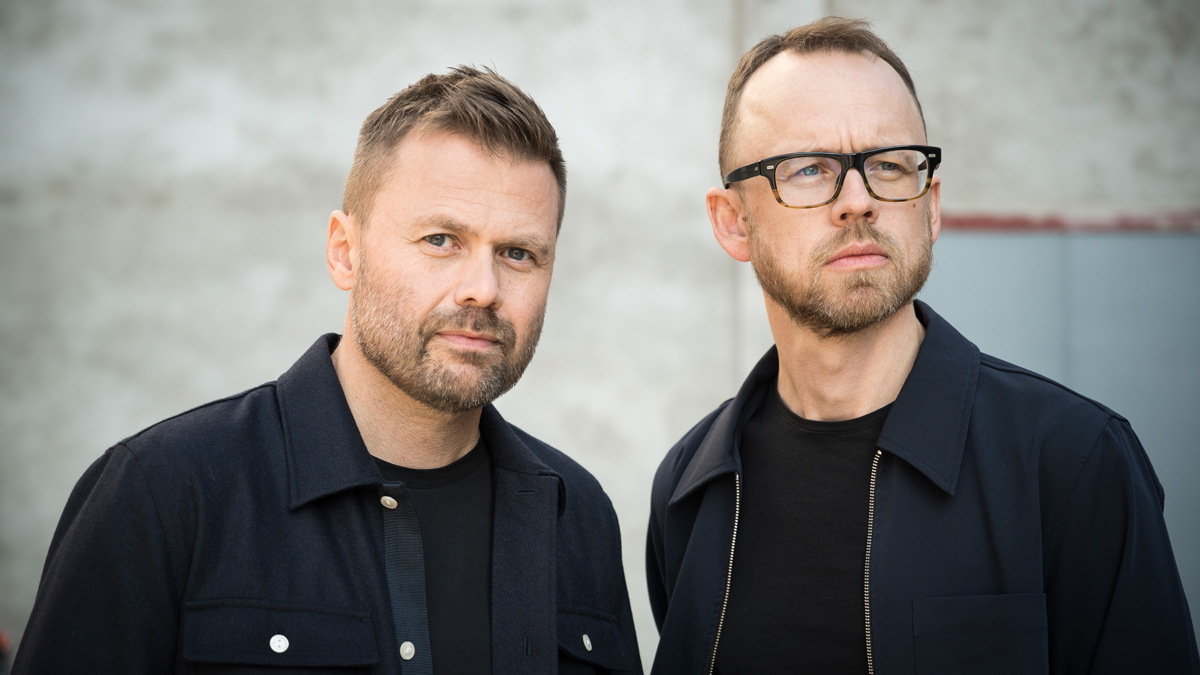
If you thought that getting a big hit was all about riffs and nothing about science, the university of Oslo might well have just proved you wrong. It has discovered that minute shifts away from your quantised grid could land you a smash hit record.
And it's all thanks to Seeb, a production duo who discovered this perfect scientific formula after analysing and copying the most popular beats out there for this remix of the song I Took a Pill in Ibiza.
The University of Oslo sounds like one of the coolest educational establishments to work at, because rather than lecturing us on particle physics or dark matter, it's just undertaken a study of dance music. Well, good on them.
They had different strategies, but they also did some of the same things.
Jon Marius Aareskjold-Drecker
According to a report at Partner Science Norway, the university set out to examine the relationship between rhythm and sound in music production, so interviewed four of the most successful EDM acts on Spotify. (We like to think they wore white coats and had clipboards, and asked searching questions in a slightly aggressive way, all while said acts tinkered in Ableton Live on laptops.)
What the university discovered, particularly after interviewing the Norwegian production duo Seeb, might well have you shifting your beats off grid, albeit just by a few milliseconds.
“All the producers were aware of how they worked with sound, rhythm, and micro rhythms," says Jon Marius Aareskjold-Drecker, a senior lecturer in Music Production (we want his job). "They had different strategies, but they also did some of the same things.”

One of the common factors they discovered was that the most successful acts used a combination of on and off grid quantisation. Professor Ragnhild Brøvig explains that, "If you change the rhythm just slightly, it can be so minimal that we don’t perceive it as a difference in timing, but we experience it as a change in sound."
We don’t perceive it as a difference in timing, but we experience it as a change in sound.
Professor Brøvig, University of Oslo
The production duo Seeb, aka Simen Eriksrud and Espen Berg, are a few milliseconds ahead on this. Their 2015 remix of Mike Posner's I Took a Pill in Ibiza has notched up 1.77 billion streams on Spotify and a similar number of YouTube views.
While putting the remix together, the duo analysed the swing quantisation in popular EDM songs and discovered – and we're not sure quite how scientific this was – that between 22% and 40% swing gets you the grooviest beats.
The university researchers studied Seeb's project files for the remix – presumably with the duo's permission – and found that the main chord arrangement used that percentage of swing and that, "the onset of the notes on the second and fourth beats was 23 milliseconds behind".

Perhaps most interesting is that Seeb say they prefer to play instrumental parts themselves, rather than programming them in on the computer, and often even play them left-handed so the results aren't so rigid.
Very small micro-rhythmic nuances had a big impact on the listening experience.
Professor Brøvig
As well as these off-grid adjustments, the university also found a couple of other production tricks the duo used which we can all steal (er, learn from). For example, Seeb mixed a tambourine sound with a hi-hat, with the university concluding that layering sounds like this affects the rhythmic perception, "by making the exact point at which a sound is made less clear to the human ear".
Other 'tricks' Seeb used to add groove are that bit more common and well known, including automating the volume, filtering, and adding sidechain compression.
The university's overall conclusion, though, was all about those minute rhythmic adjustments. “We saw that very small micro-rhythmic nuances, such as a few milliseconds of deviation of a note from the grid, had a big impact on the listening experience," said Professor Brøvig.
And Aareskjold-Drecker concluded: “It's no coincidence that the song became so popular. The producers put in a lot of hard work to get there.”
So there you have it: play left-handed, work hard, and stop that rigid quantising. Here's Seeb's latest hit, Would You Lie, with Alexander Stewart, and there's more information about the duo on their website.







